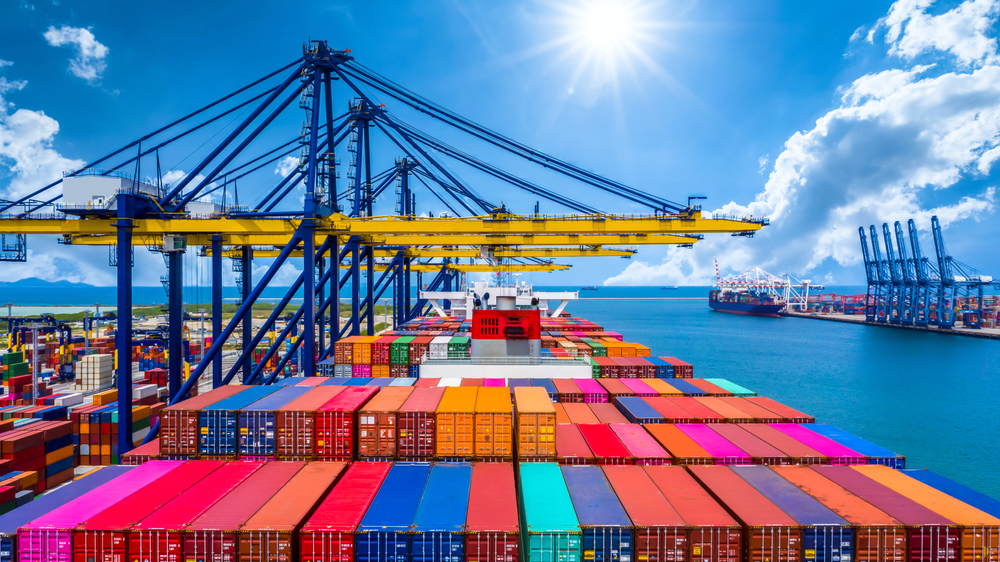The world of logistics and transportation can be intriguing for a person new to the industry. With this blog, we aim to provide a light and accessible introduction to crucial components of the industry. The global shipping industry serves as a vital lifeline for international trade, connecting businesses and consumers across the globe. To keep this world running, enormous vessels such as container ships, bulk carriers, and tankers navigate our oceans and transport an astonishing range of products. From transporting everyday consumer goods to raw materials and energy resources, the shipping and logistics industry is always on duty.
Through this blog, we’re going to discuss and clarify the difference between a liner service and a tramp service. By de-cluttering the distinctions between these two modes of transport, we aim to equip you with valuable insights for navigating the dynamic world of shipping. To begin with, liner service refers to scheduled shipping services that adhere to predetermined routes and fixed timetables. On the other hand, a tramp service offers flexible shipping solutions on an ad-hoc basis without adhering to strict schedules or routes.
What is a Liner Service?
Liner service is a crucial component of the global shipping industry, as it provides scheduled and reliable transportation solutions for goods and cargo. Let’s explore the key features of a liner service:
- Regularity – Liners operate on a regular schedule, with ships departing and arriving at specific ports according to set timetables. This allows businesses to plan their shipments in advance while also ensuring timely delivery and supply chain management.
- Fixed Routes – Liner service ships connect to all major ports around the world. The routes they follow are designed to optimize efficiency and accommodate high-demand cargo traffic. This offers stability and reliability to both the shippers and the receivers.
- Standardization – Liner service utilizes container ships, which transport cargo in standardized containers. This practice of containerization simplifies the loading, unloading, and handling of goods. This also enables containers to be easily transferred between ships, trucks, and trains.
- Types of Cargo – Liner service accommodates a wide range of cargo types, including consumer goods, raw materials, and perishable items. They also have onboard facilities such as refrigerated containers or specialised handling gear.
- Connectivity – Liner service connects ports worldwide, enables businesses to reach customers in new markets, and supports the growth of industries by providing a reliable transportation infrastructure.
By adhering to fixed schedules and routes, it offers stability, reliability, and widespread connectivity, making it an essential choice for businesses seeking predictable and consistent shipping solutions.

What is a Tramp Service?
Tramp service is another important aspect of the global shipping industry, offering flexible and on-demand transportation solutions for cargo. Let’s explore the key features of a tramp service:
- Flexible Routing – Tramp service ships operate freely on various routes based on the requirements of the cargo and customers. They are not bound by fixed schedules or routes, which allows for greater flexibility.
- Tailored Solutions – Tramp Service offers customised shipping solutions and can accommodate specialised cargo, oversized shipments, or goods requiring specific handling or storage conditions. This tailored approach helps businesses tackle transportation challenges effectively.
- Ad-Hoc Operations – Tramp service ships are chartered for specific voyages or contracts, enabling them to transport cargo wherever and whenever needed. This flexibility is particularly beneficial for industries with irregular or seasonal shipping demands.
- Cost Efficiency – Shippers can negotiate rates on a voyage-by-voyage basis and often secure more competitive pricing, especially for large or specialised shipments. The ability to optimise routes and adjust schedules according to cargo demand also contributes to cost savings.
- Cover Emerging Trade Routes – Tramp service can explore emerging trade routes that may not be covered extensively by liner service. This can be in regions with limited infrastructure or access.
Tramp service is a dynamic and adaptable approach to shipping, providing tailored solutions and greater flexibility in routing, which make it a valuable option for businesses with unique shipping requirements.
Weight the differences
Here’s a quick look at the differences between both services to help you understand better.
| Liner Service | Tramp Service |
| Fixed routes and timetables | Flexible routes and timetables |
| Established and specific routes only | Customizable routes and port selection |
| Standardized containerization | Tailored handling for specialized cargo |
| Container ships | Ship selection possible |
| Published rates or contracts | Cost negotiated voyage-by-voyage |
| Broad connectivity to popular ports | Emerging regions can be covered. |
We’ve discussed how liner service follows fixed routes and schedules using standardized containers, while tramp service offers flexibility by tailoring cargo handling and vessel selection. Liner service aims for broad connectivity, while tramp service embraces emerging market opportunities. Understanding these distinctions is key to navigating the logistics and transportation industries effectively. Contact Total Transport to discuss your shipping and logistics needs and to experience our Liner Agency services.





Recent Comments